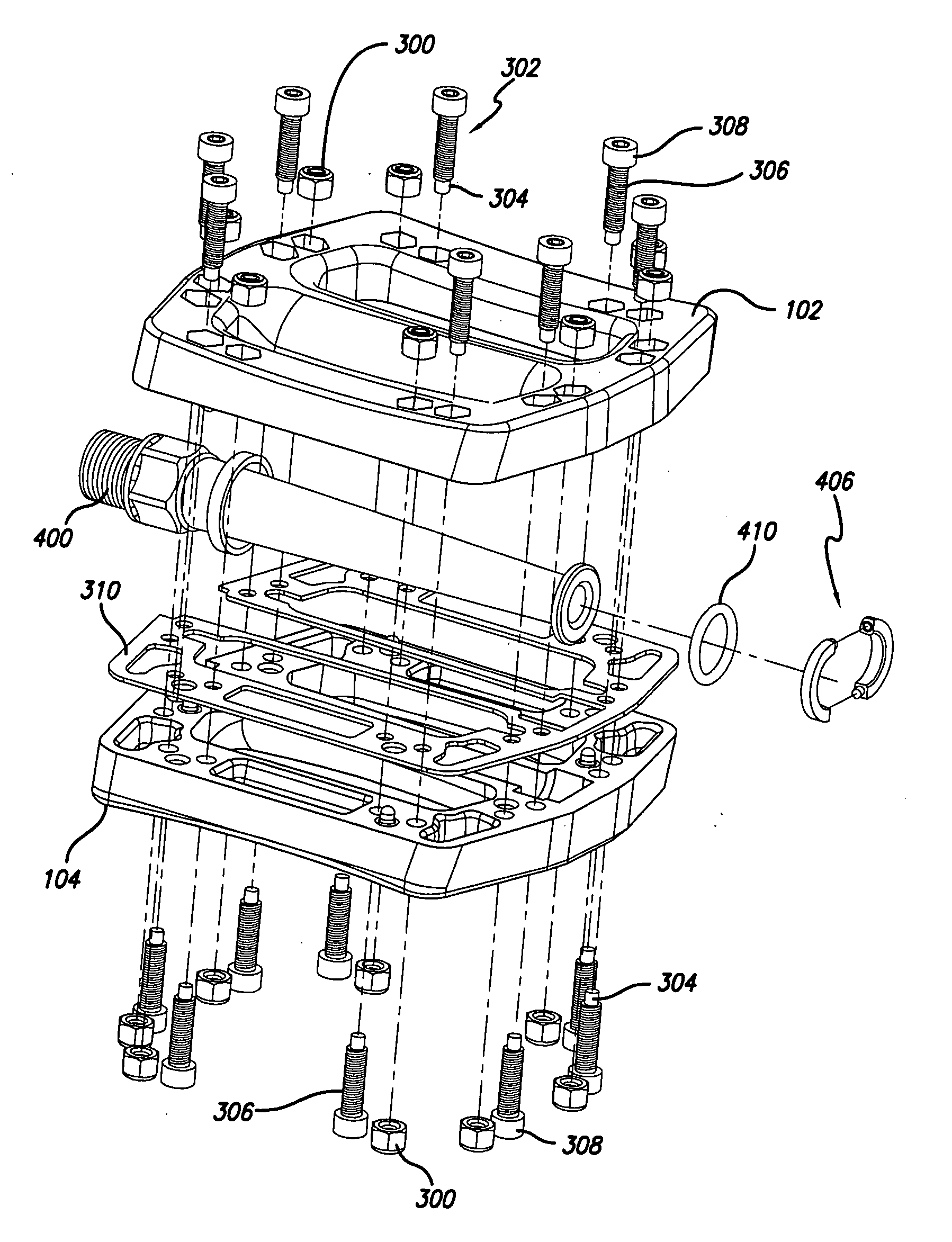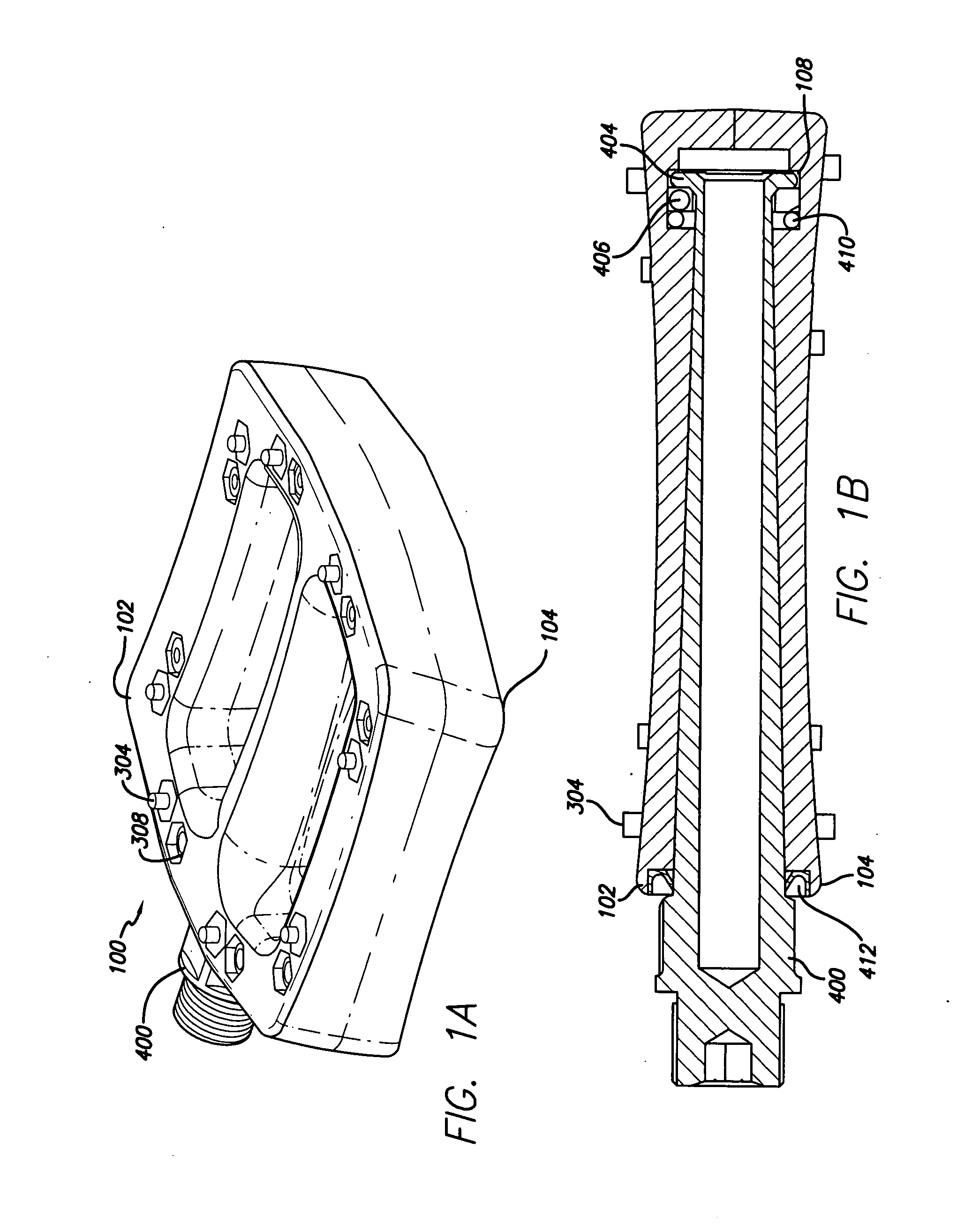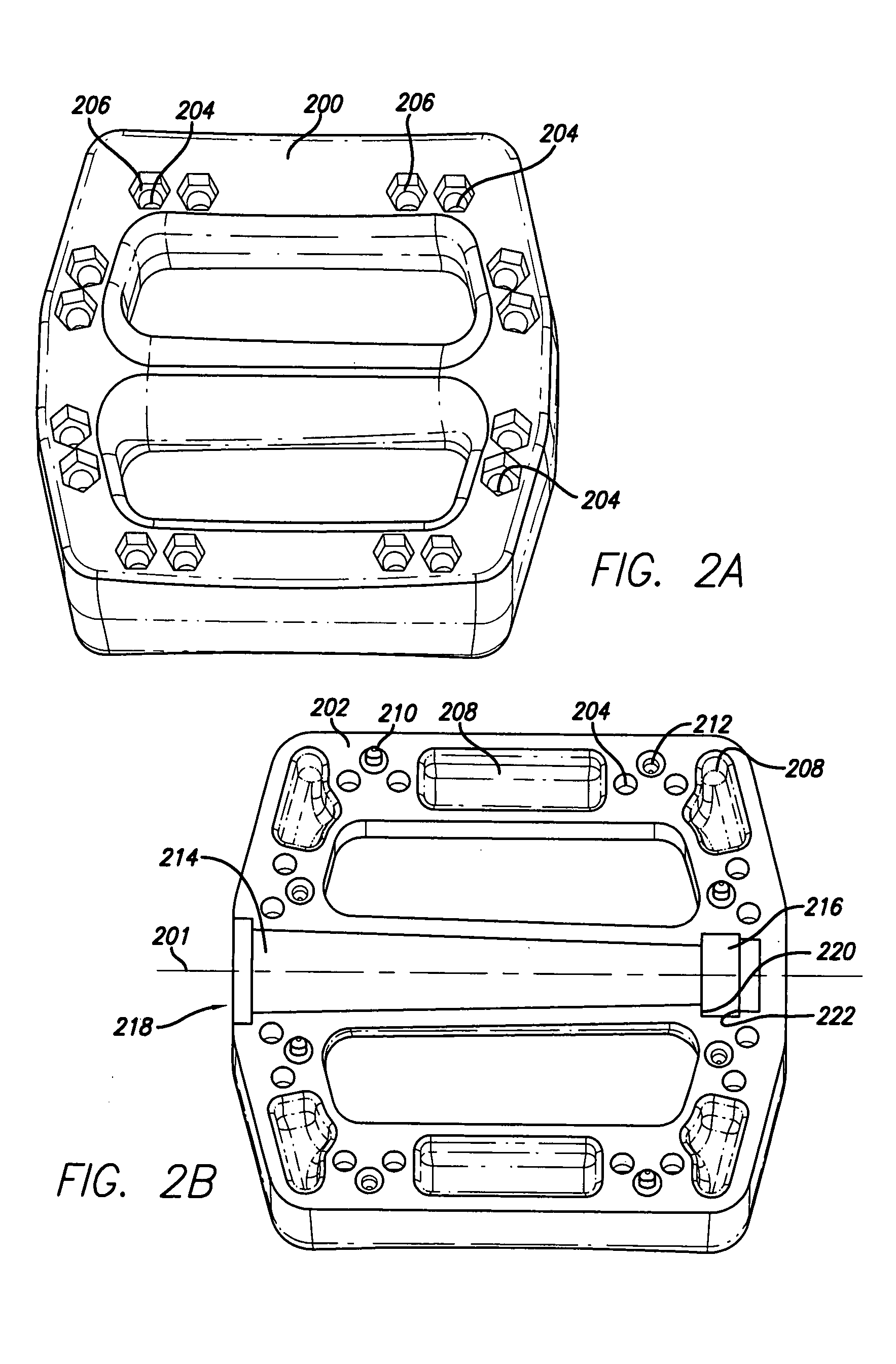Bicycle pedal
a pedal body and bicycle technology, applied in the field of bicycle parts, can solve the problems of reducing the strength and weight of die-castings, requiring expensive tooling, and requiring extensive secondary machining work, so as to facilitate rotational movement of the pedal body, and minimize radial and axial movement.
- Summary
- Abstract
- Description
- Claims
- Application Information
AI Technical Summary
Benefits of technology
Problems solved by technology
Method used
Image
Examples
Embodiment Construction
[0018]The detailed description set forth below in connection with the appended drawings is intended as a description of illustrated exemplary embodiments and is not intended to represent the only forms in which these embodiments may be constructed and / or utilized. The description sets forth the functions and sequence of steps for constructing and operating the present invention in connection with the illustrated embodiments. However, it is to be understood that the same or equivalent functions and / or sequences may be accomplished by different embodiments that are also intended to be encompassed within the spirit and scope of the present invention.
[0019]The present invention is an improved bicycle pedal 100 formed by mating two pedal bodies 102, 104 that are fastened together about a pedal axle 400 with nuts 300 and bolts 302 such that the tail 304 of the bolts 302 that fasten the pedal bodies 102, 104 together serve as traction pins by protruding out and above the outer surface 200 ...
PUM
 Login to View More
Login to View More Abstract
Description
Claims
Application Information
 Login to View More
Login to View More - R&D
- Intellectual Property
- Life Sciences
- Materials
- Tech Scout
- Unparalleled Data Quality
- Higher Quality Content
- 60% Fewer Hallucinations
Browse by: Latest US Patents, China's latest patents, Technical Efficacy Thesaurus, Application Domain, Technology Topic, Popular Technical Reports.
© 2025 PatSnap. All rights reserved.Legal|Privacy policy|Modern Slavery Act Transparency Statement|Sitemap|About US| Contact US: help@patsnap.com



